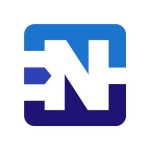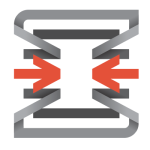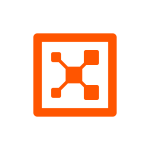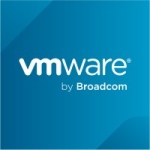What is our primary use case?
We mainly used CloudGuard for IPS and IDS in our AWS environment, and we also used it for additional logging to see what was going in and out of our network in AWS. We have very limited visibility, especially when it comes to logging, and AWS does not support IPS and IDS as of now.
How has it helped my organization?
The way they implemented their auto-provisioning, where you just change a port or a security setting on AWS and it applies it automatically to all your firewalls, is good. You don't have to go into both of your firewalls, if you have redundancy like we did. You just need to change it on one of them in AWS, and that change applies to both of the firewalls. That saved us a lot of time. Usually, on physical firewalls, if you have to do that, you're going to have to either do command line, or if you don't want to do command line you have to do console and do multiple changes everywhere, from firewall rules to access rules. With Check Point, all you have to do is one change in the AWS console, and it will apply it within your firewall. Without that we would have had to do that in AWS, then go into the SmartConsole for Check Point.
I'm the only one who does security for both our on-prem and our cloud environments. Having Check Point there, I didn't really have to do much. It gave me peace of mind that it would do its job. I did check on it on a daily basis, just to make sure everything was okay and that there was no unwanted traffic during the day or during the night before. I didn't see anything unusual and if I did see something, it was one of those one-offs because another team was doing testing or something like that.
What is most valuable?
The IPS, IDS and logging were some of the features that I found useful. Also, the automation using AWS CloudFormation, the way we deployed it to our system, was very simple.
The comprehensiveness of CloudGuard's threat prevention security, looking at the logs, was really good. It would tell me if there was any unwanted traffic on our system, it would keep track of that. We checked it to make sure that everything was okay. It gave me the information that I needed to keep our network safe.
It's also pretty user-friendly. I've used multiple firewalls, both physical and virtual, and to me, Check Point is on top when it comes to ease of use and understanding the firewall installation. It's very very simple. And the way they implemented CloudFormation and the auto provisioning, is hands-down one of the best.
What needs improvement?
We did not use the AWS Transit Gateway, and that's one of the things that we're currently using. I believe we will be working with Check Point again, in the near future, to implement it, once they start having proper support for a single customer with multiple accounts. When we were using them, we had to install Check Point on each and every single account.
I believe they're working on a solution for that. I know they're utilizing Transit Gateway for it, and that is exactly what we're using right now. I'm excited for them to have that ready, and for us to put it in our system.
In general, cloud infrastructure or a cloud-based environment, is very fast when it comes to technology. Things get developed right away. Check Point just needs to adapt to those changes quicker.
For how long have I used the solution?
We used Check Point CloudGuard IaaS for over two years. We stopped using it about six to eight months ago. Our environment basically expanded to such a large scale that it wasn't feasible for us to use CloudGuard in our multiple-account production environment.
We are definitely planning on redeploying CloudGuard at some point because we always need IPS and IDS and better logging. AWS only has two or three companies that do IPS/IDS. We definitely need those kinds of protection and Check Point, in my opinion, is one of the best so I still want to put it in place. But their solution doesn't really match our requirements. That's the only reason we moved away from Check Point.
What do I think about the stability of the solution?
Its stability was really good.
What do I think about the scalability of the solution?
They do implement Auto Scaling and that was one of the requirements that I asked them about. One of their southbound firewalls did not have Auto Scaling at that time, so that's why I requested it.
The scalability is very good; again, very user-friendly. I wouldn't even say "user-friendly" because, as long as you deploy it properly, you can kill an EC2 and it will spin up another one right away, within about a minute and a half. And it will be ready for production right away.
Our production environment never decreased, it only increased. Our presence in AWS quadrupled over the time that we used CloudGuard. I'm managing about 32 accounts that, obviously, need protection. Once they implement that particular solution, we'll be very happy to have them integrated within our environment.
The number of users of CloudGuard, because we had deployed it in our production environment, was as many customers as we had. All traffic went through CloudGuard.
How are customer service and technical support?
I never dealt with tech support. I dealt more with our account manager. We never had issues with Check Point, so I never had a chance to talk to their support.
Which solution did I use previously and why did I switch?
We were using native AWS protection.
How was the initial setup?
The initial deployment wasn't too complicated because they had CloudFormation. The only thing that I had issues with was having to integrate that within our company's requirements. Our needs kept changing because we were new to AWS. But that was not an issue with Check Point. And once the requirements within the company had been solidified, we deployed the solution to four or five environments in our AWS and it was fine throughout. We even did their second version of CloudGuard, and again, it was easy.
It's pretty straightforward. It's literally just a matter of selecting the right version of Check Point, your VPC, your management, your password, and that's pretty much it. It's pretty simple.
With the way AWS does things, our deployment took about half a day. And that was mainly because there were dependencies on CloudFormation, where it would wait for a task to finish, and AWS depends on the region that you're in. If you pick a very busy region, then it takes longer than usual. So half a day is giving it padding, in terms of time.
Once it was up and running, it required just me for maintenance.
What about the implementation team?
I was the only one from our organization involved with the deployment.
In the initial installation, the first time, I was working with a Check Point engineer, because we were new to AWS and the Check Point integration with AWS. We came from Azure. We needed somebody just to make sure that we were doing the right thing. But after that, we never needed Check Point support. They would check in on us, just to make sure everything was good.
The engineer was really good. He was there to walk us through and to make sure we understood every piece of the deployment. After that, I put together some documentation based on our needs. From then on, future deployment was fairly simple.
What was our ROI?
The ROI is in the number of people managing it. Technically, you don't need to manage it. If you have an on-prem, you constantly need to manage the firewall. You need to make sure everything is okay, when it comes to hardware, software, and managing the actual firewall. With CloudGuard on the cloud, we eliminated two of the three. We didn't need to care about the hardware or about the software upgrades. If we did need to upgrade, it was just with respect to CloudFormation. We didn't need to do any firmware. The only thing we needed to do was manage an interface, which is what you're going to do anyway.
You only need just one person to do it. When it comes to return on investment, you don't need to hire a full team to manage your whole network. If you have a firewall team, with Check Point CloudGuard, you don't need it anymore. It's just a single person because, if a Check Point goes down, it gets spun up right away. You don't need to call anybody or order hardware or anything like that.
What's my experience with pricing, setup cost, and licensing?
Pricing of CloudGuard is pretty fair when you have a single account. It's comparable with other cloud providers. But for our use case, it got really pricey when we had to deploy multiple CloudGuards on multiple accounts in different regions, because you can't have CloudGuard protecting multiple regions. That's the big thing.
Which other solutions did I evaluate?
Before picking Check Point, I checked Cisco, Fortinet, and Palo Alto. At that moment, when we were doing a PoC, Check Point was ahead of them when it comes to implementation, deployment, and ease of use.
Deployment was the big thing for us because we knew that we were going to be deploying this multiple times. We wanted redundancy, and ease of use and deployment. Check Point nailed those top-three requirements, so it was the clear choice for us. The others didn't have the robust capabilities of Check Point or CloudGuard, to do the things that we wanted. Those included ease of deployment using CloudFormation, scalability using Auto Scaling and the auto-provisioning within CloudGuard.
What other advice do I have?
My advice: Get it. It's a great product. It's a great solution.
In terms of CloudGuard's block rate, malware prevention rate, and exploit resistance rate, we didn't really do much testing when it comes to those types of scenarios. But I've used Check Point as a physical firewall before, and it was great. It detected threats and gave me an alert as soon as it detected them. It was really good.
Disclosure: PeerSpot contacted the reviewer to collect the review and to validate authenticity. The reviewer was referred by the vendor, but the review is not subject to editing or approval by the vendor.


















